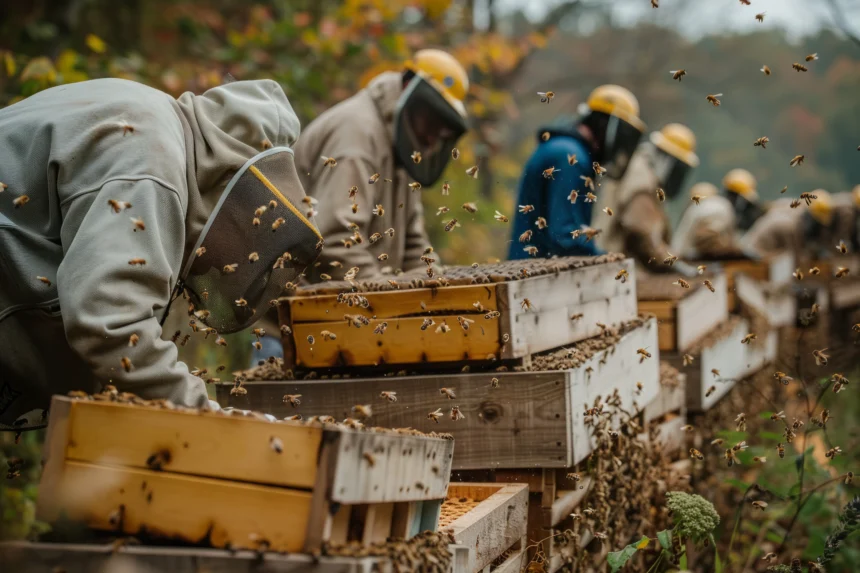As climate concerns grow and pollinator populations continue to decline, sustainability is becoming a central theme in modern apiculture. Beyond the honey harvest, today’s beekeepers are redefining how they interact with the environment—rethinking materials, waste, energy use, and the ecological footprint of their practices. At the core of this shift lies a growing focus on the hive itself. Choosing a more sustainable beehive solution isn’t just about eco-consciousness; it’s about creating a long-term, resilient habitat that supports both bees and biodiversity.
Rethinking Hive Materials for a Lighter Footprint
Traditional hives are often made with treated lumber, synthetic paints, and plastic components—all of which can pose environmental risks and aren’t always recyclable or biodegradable. Sustainable hive designs instead favour renewable or recycled materials like FSC-certified wood, natural resins, and low-VOC finishes. These choices reduce resource extraction, lower emissions during manufacturing, and create healthier conditions inside the hive. A truly eco-friendly hive should align with both nature’s needs and long-term human responsibility.
Thermal Efficiency as a Sustainability Metric
Energy use isn’t just a human concern—bees expend considerable effort to regulate hive temperature. Hives that naturally moderate internal temperatures reduce the metabolic toll on bees, leading to lower honey consumption and greater colony health. Insulated, thermally efficient hives decrease the need for winter feeding and reduce colony losses, helping beekeepers rely less on artificial inputs. In the context of sustainability, thermal performance directly contributes to more self-sufficient, low-intervention beekeeping.
Longevity Reduces Environmental Waste
Durability is a key but often overlooked sustainability factor. A cheap hive that lasts five years and ends up in landfill is far less eco-friendly than one that lasts two decades with minor maintenance. Long-lasting hive designs reduce the frequency of replacement, minimize waste, and cut down on production-related emissions. Whether made of rot-resistant wood, moulded composite, or insulated panels, hives built to endure shifting climates are a smarter environmental investment.
Modular Design for Repair and Adaptation
Sustainable solutions also consider what happens when something breaks. Hives with replaceable parts—rather than single-piece structures—extend their lifespan by allowing damaged components to be swapped out rather than discarded. Modular systems also give beekeepers the flexibility to expand or modify the hive as the colony grows, reducing the need to purchase new setups. This repair-friendly approach helps keep materials in use and out of the waste stream.
Supporting Bee Health with Natural Interiors
Some sustainable hives go further by minimizing chemical residues and promoting microbial balance. Using untreated wood or natural coatings inside the hive allows beneficial microbes to coexist, much like in wild colonies. This microbiome supports bee immunity and may reduce the need for medications or treatments. Creating a hive that encourages biological harmony is both a health strategy and a sustainability move, reducing chemical use and fostering more natural beekeeping.
Eco-Friendly Manufacturing and Distribution
The sustainability of a hive isn’t limited to its use. How it’s made, transported, and packaged all factor into its environmental impact. Locally made hives reduce transportation emissions, while minimal or recyclable packaging further shrinks the footprint. Beekeepers looking for truly green options should ask about a hive’s full lifecycle—from raw materials to delivery. Transparency in sourcing and production is an essential part of responsible purchasing.
Aligning with Pollinator Conservation Goals
Choosing an environmentally sound hive aligns with broader ecological goals beyond beekeeping. Pollinator habitats are shrinking due to urban sprawl, pesticides, and climate shifts. By selecting sustainable equipment, beekeepers contribute to a system that respects and protects the very insects they rely on. Many also go a step further, integrating pollinator gardens, reducing chemical use, and participating in local conservation efforts. Beekeeping becomes part of a larger regenerative cycle, not just an agricultural practice.
Meeting Consumer Demand for Ethical Beekeeping
Today’s consumers are more aware than ever of how their food is produced. This includes honey and hive products. Farmers’ markets, co-ops, and conscious buyers often look for honey sourced from environmentally responsible operations. Beekeepers who adopt sustainable hive solutions can share that story—demonstrating care for the environment, colony welfare, and long-term ecological impact. It’s not just about better bees; it’s also about better branding in an evolving market.
Where Innovation Meets Responsibility
Sustainability in beekeeping is no longer a fringe concept—it’s becoming a foundational principle for future-focused keepers. A hive that embodies environmental responsibility offers more than just shelter for bees. It becomes a symbol of harmony between human ingenuity and natural systems. By investing in sustainable hive design, beekeepers take an active role in shaping a healthier future—for pollinators, for people, and for the planet.










 /home/u448362301/domains/theexpotab.com/public_html/wp-content/themes/foxiz/templates/popup.php on line 167
/home/u448362301/domains/theexpotab.com/public_html/wp-content/themes/foxiz/templates/popup.php on line 167